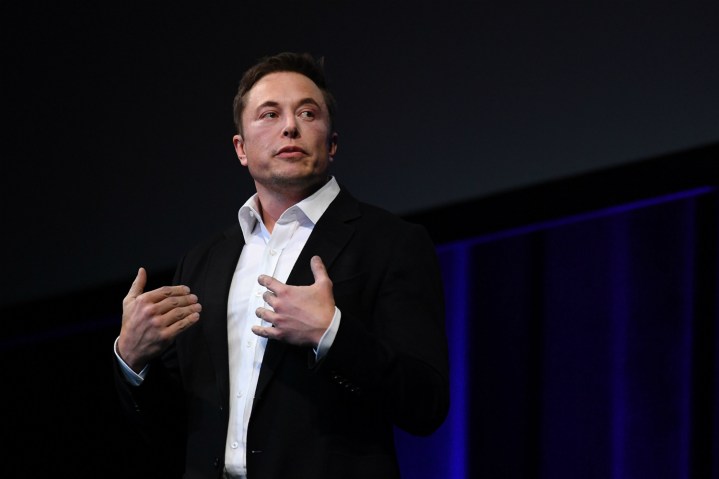
Elon Musk is one of the most well-known entrepreneurs in tech today; a businessman whose diverse interests and eccentric persona have drawn comparisons to Henry Ford and even Tony Stark. Musk made his early fortune in software, starting an online banking site called X.com that would eventually merge into PayPal, and since then he has invested in a variety of ventures, some of which are unorthodox, to say the least. In February, his aerospace company, SpaceX, launched its most powerful rocket yet, the Falcon Heavy. Always one for panache, Musk loaded the rocket with a Tesla Roadster blasting David Bowie’s Space Oddity — but believe it or not, that’s just the tip of the iceberg when it comes to his outrageous ideas. Here are some of our favorites:
Photo: Mark Brake/Getty Images
The Hyperloop
As carbon emissions rise once again, newer, cleaner modes of transportation are essential. Musk has already made waves in the transportation industry with Tesla, a company geared toward building electric cars suitable for widespread adoption, but while the Model S may be a practical solution to transportation woes, it’s far from Musk’s most ambitious. That would be the Hyperloop, a proposed transportation system in which pods jet through giant tubes at incredibly high speeds (possibly over 700 mph). Magnets would propel the pods, while a cushion of air inside would keep them gliding smoothly like a puck on an air hockey table.
Musk merely supplied the idea for the Hyperloop, putting it out there for others to make a reality. Companies like Hyperloop One and Hyperloop Transportation Technologies have answered the call, building test tracks and pushing the technology to new limits.
Photo: Hyperloop Transportation Technologies

Satellite constellation
Although it may seem like the internet is everywhere, there is still a notable percentage of the global population that does not use it, and in many places with internet service, connections are still frightfully slow. Musk’s company SpaceX — the same company building rockets to take humanity to Mars — has been laying the foundation for a global broadband network provided by a constellation of satellites.
The plan (which the company referred to in a trademark filing as “Starlink”) requires a hefty investment. To meets its coverage goals, the company will need to launch 4,425 satellites into orbit — which is a rather lofty goal, given that there were only 1,381 operational satellites in orbit in 2017, according to World Atlas.
Photo: NASA

Boring Company flamethrower
Companies sell merchandise all the time, but Musk found a unique way to get the word out for The Boring Company, his venture dedicated to digging tunnel networks for expanded public transit. After selling hats (like a normal business would), Musk expanded to branded flamethrowers. The devices sold like hotcakes, with all 20,000 preorders selling out.
The flamethrowers drew a lot of attention and controversy — perhaps too much. This is neither the first flamethrower available on the market, nor is it comparable to military weapons, as Ars Technica points out. Military flamethrowers tend to use liquid fuel that clings to objects, burning continuously, while Boring’s device appears to use a propane tank, essentially making it a big blowtorch. No word yet on if more flamethrowers are on the way, but if you missed out on the pre-sale, you can always try eBay.
Neuralink
If there is a running theme in Musk’s work, it’s that humanity needs to develop new technologies to survive potentially cataclysmic events. Colonizing Mars will give mankind some insurance in case of an apocalypse on Earth, and Neuralink is Musk’s proposed solution to the problem of artificial intelligence: Specifically, that AI will replace or even eradicate humanity. The idea behind Neuralink is that, rather than accept the reign of machines over humans, humanity should merge with them.
It’s not such a crazy idea. People already incorporate devices like pacemakers into their bodies for medical purposes. Even something as simple as a pair of eyeglasses is an artificial construct used to enhance the body’s functions. Neuralink’s goal is to build advanced neural interfaces, allowing people to enhance their brain power and maybe even mentally interface with machinery. Becoming a cyborg does sound like a better fate than extinction…
Photo: Google DeepMind
OpenAI
In keeping with Musk’s goal of preventing an AI apocalypse, he founded a non-profit called OpenAI, dedicated to studying artificial intelligence and coming up with measures to ensure that the technology does not turn against humanity. True to its name, OpenAI pledges to share its research with the world, so that researchers the world over can cooperate to ensure that artificial intelligence develops along paths that are safe for civilization.
It might appear paradoxical at first; by recruiting some of the top researchers in the field, and allowing their research to spread freely, OpenAI is helping AI development accelerate, which could bring about the rise of intelligent (and dangerous) programs faster. The hope is that, free from the need to turn a profit, OpenAI will focus on ways to make AI safe, and that sharing that research with the world will allow everyone involved to keep tabs on the development of AI. So far, OpenAI’s most famous achievement may be demolishing professional Dota 2 players, but the project has great potential for good (or ill).
Photo: Sean Gallup/Getty Images





